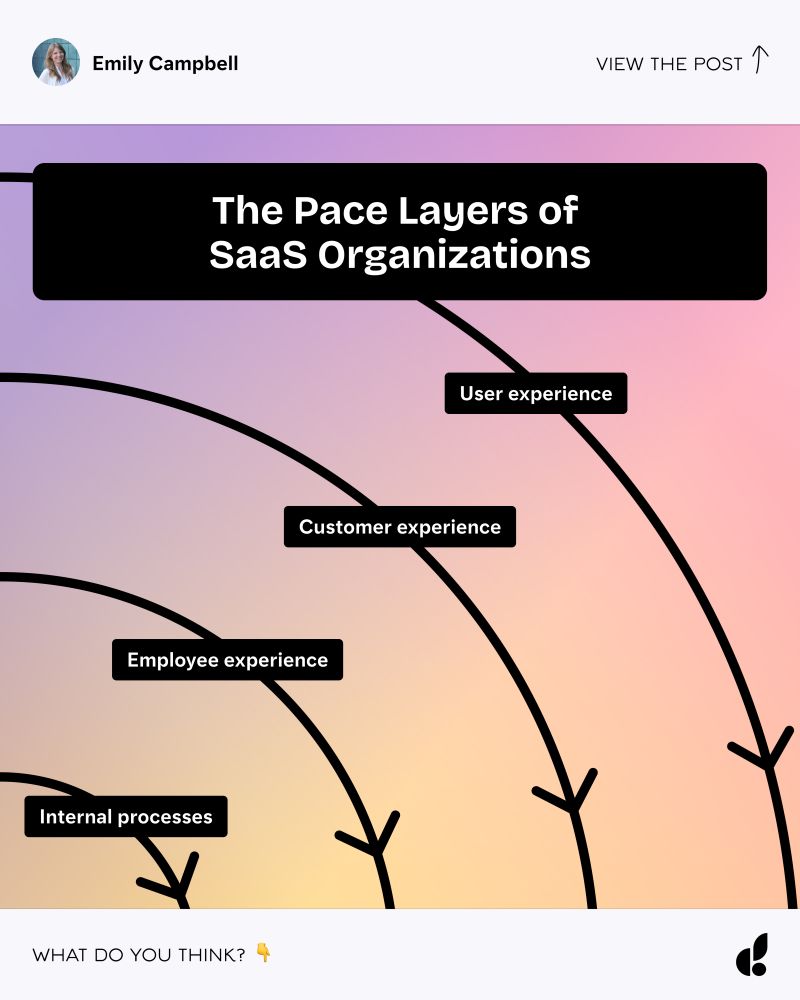The Pace Layers of SaaS Organizations

Hot take: any issue you find in a user experience points to a problem somewhere deeper in the company. Great cultures produce great products. Poor cultures, well…
Success has many parents, failure is an orphan.
I’m sure you are already thinking of a few examples.
The problem is people are most likely to react to what they see. Everyone has an opinion about the interface, CEOs dictate copy, we blame the design when a user runs into a problem. But…
…maybe the design was based on the wrong assumptions of how the product is used by the customer, but the designer never had the opportunity look
…maybe those assumptions exist because we prioritized a business metric over listening to customers and serving their needs first
…maybe someone had that realization but they weren’t empowered to do anything about it
…maybe they were actively blocked
…maybe internal politics incentivized them to stay quiet
—-
Sound familiar? What can we do about it?! The Pace Layering model helps me make sense of this
This is the idea that a system has multiple layers. Deep rooted layers affect everything on top of it, evolve slower, and tend to be less visible (think “culture”). Surface layers are more reactive to what’s beneath it, and change faster (think “fashion and trends”)
I could list 10 things designers could be doing differently to address this, but let’s dig deeper. CEOs, operational executives, Heads of HR, People leaders – this is for you. Your product is a beacon of the health of your organization and processes.
If the system is producing poor results, fix the system. When a canary dies in a coal mine, we don’t blame the bird
I know this is heavy, but let’s have more conversations like this. Companies are systems. Systems are a reflection of decisions.
Design systems with intent. Or don’t, but the results speak for themselves.
